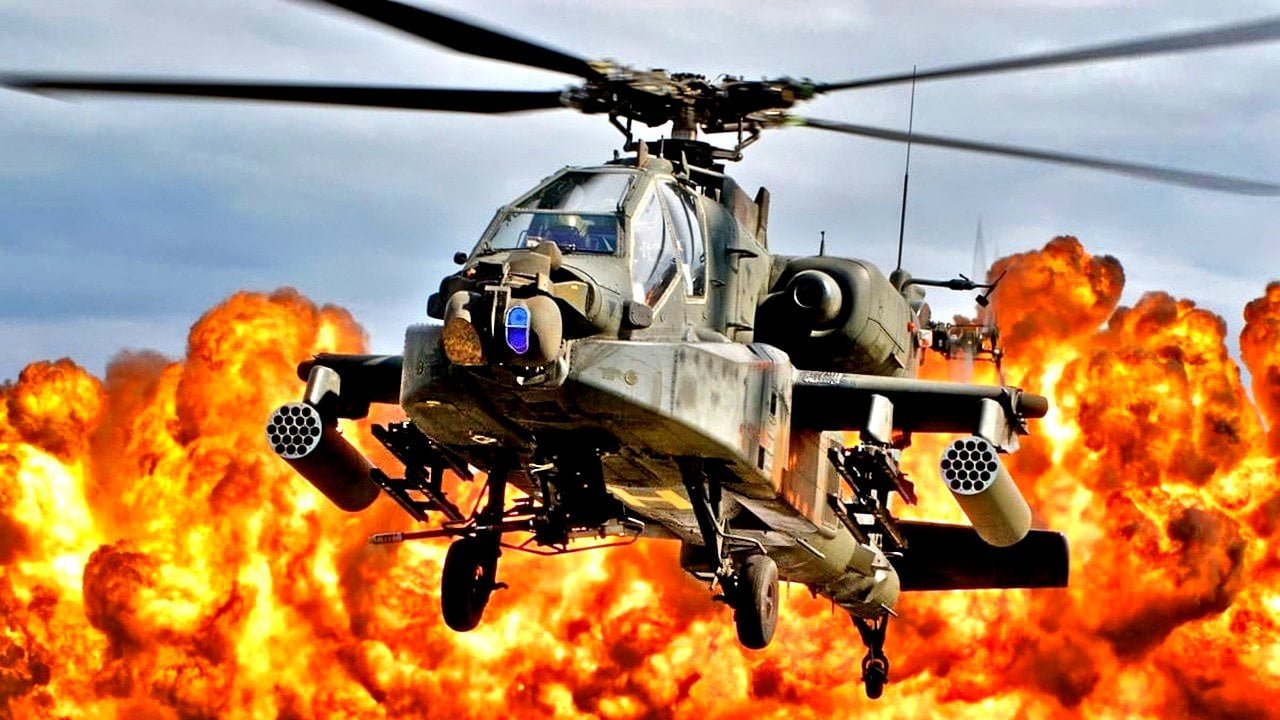What You Need to Know: The U.S. Army plans to extend the service life of its AH-64 Apache attack helicopters into the 2070s by implementing significant upgrades. Initially designed for Cold War scenarios, the Apache has proven versatile in conflicts from the Gulf War to Afghanistan.

-With the cancellation of the Future Attack Reconnaissance Aircraft (FARA), the Apache’s role has become more vital, and older models will now receive modernized systems. Working alongside the Future Long-Range Assault Aircraft (FLRAA), the upgraded Apache will enhance the Army’s capabilities.
-This decision highlights the Pentagon’s shift towards upgrading proven platforms rather than developing costlier new systems.
The Army Changes Its Plans for the AH-64 Apache
The United States Army’s AH-64 Apache attack helicopters are probably the best helicopters in the world. And, because of changes made by the Pentagon in response to tighter budgets and the demands of the Ukraine War, it looks like the Apache is going to be updated so much that it will be able to continue serving the US Army well into the 2070s.
In essence, the Army is creating its own version of the Air Force’s B-52 Stratofortress, in that, like the B-52, the Apache is going to serve for many decades longer than their designers had originally intended.
It just goes to show you that the Pentagon really can do more with less. Of course, in this case, they’re being made to do more with less after having blown through gobs of hard-earned tax dollars and coming up short. You see, as Thomas Newdick at The War Zone, has reported the “Modernized Apache has been scaled back somewhat compared to how it once looked.”
In fact, Boeing, the firm responsible for the AH-64 Apache, anticipates these upgraded Apaches operating in tandem with the Army’s Future Long-Range Assault Aircraft (FLRAA).
Fundamental Changes Make the Army Stick with the Apache
Interestingly, the Army’s planned Future Attack Reconnaissance Aircraft (FARA) was set to replace at least 91, older Delta variant AH-64 Apache helicopters. But that plan was scrubbed earlier this year after the Pentagon canceled FARA. Thus, now those 91 Deltas have to be upgraded. By removing the FARA platform, as Newdick assessed in his recent piece this makes the Apache “an even more critical asset for the Army and refocuses efforts to keep it effective and relevant for another four decades or more.”

The Apache has proven itself time and again since it was first deployed decades ago. Designed to fight a potential Red Army invasion of Europe during the heady days of the Cold War, it quickly displayed its effectiveness in the deserts of Iraq and Afghanistan in America’s Global War on Terror (GWoT). Yet, its original mission was to fight—and win—a great power war, specifically above the bloody plains of Europe. With the Ukraine War still raging, and the Apache remaining such a popular war machine, the Army and Boeing might be getting back to form with the Apache attack chopper.
Regardless of what the Pentagon may intend to do in terms of creating newer helicopters, the moment they opted to cancel their much-ballyhooed Comanche attack helicopter a decade ago, they forced themselves to remain committed to the Apache. Now, the Army is getting smart. Rather than reinvent the wheel with a new system entirely. They’re simply augmenting the existing platform by upgrading the systems in the Apache and merging it with newer platforms, like the FLRAA, to enhance its lethality.
Apache Helicopter: A Very Attractive Platform
Now, combine that with the Europeans’ perceived threat from Russia and the United States has a critical export in the defense arms sector. The Apache is an amazing bird that will continue to serve this country—and those of America’s allies—for decades to come. It still strikes fear and loathing in the hearts and minds of America’s adversaries and gives the forces deploying these systems considerable advantages over America’s great power rivals, such as Russia and China.
The Pentagon should learn more from this experience and seek to extend the life cycles of many of its more expensive platforms rather than replace them with even costlier systems that will take years to build and likely rarely live up to expectations.
About the Author
Brandon J. Weichert, a National Interest national security analyst, is a former Congressional staffer and geopolitical analyst who is a contributor at The Washington Times, the Asia Times, and The-Pipeline. He is the author of Winning Space: How America Remains a Superpower, Biohacked: China’s Race to Control Life, and The Shadow War: Iran’s Quest for Supremacy. His next book, A Disaster of Our Own Making: How the West Lost Ukraine, is available for purchase wherever books are sold. Weichert can be followed via Twitter @WeTheBrandon.
Image Credit: Creative Commons.
